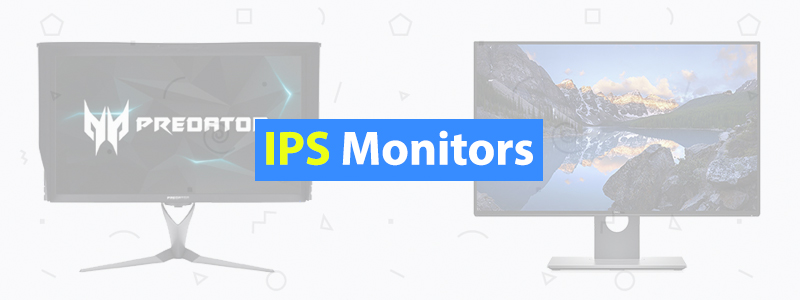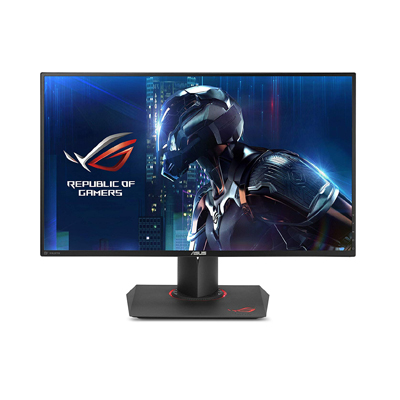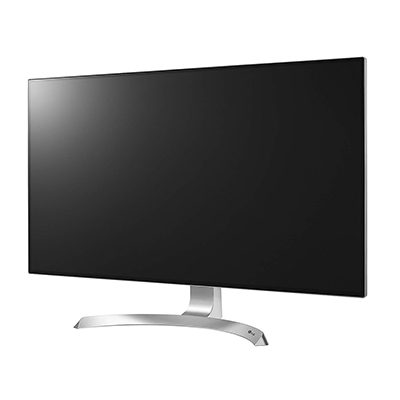5 Best IPS Monitors of 2019
It’s easy to like what monitors with In-Plane Switching (IPS) panel tech bring to the table. They offer better overall picture quality and wider viewing angles than TN and VA monitors. And among the three common panel technologies, they are considered the best for all-around use. But what’s definitely not easy is shopping for the best IPS monitors on the market – there are dozens of options to choose from.
We’re here to make things easier for you. In this list, you’ll find the best IPS monitors currently out, from a 4K G-Sync monitor to a big-screen monitor for multitasking. All products included here are the best of the best and are great for productivity, general use, and gaming.
| Budget |
|---|
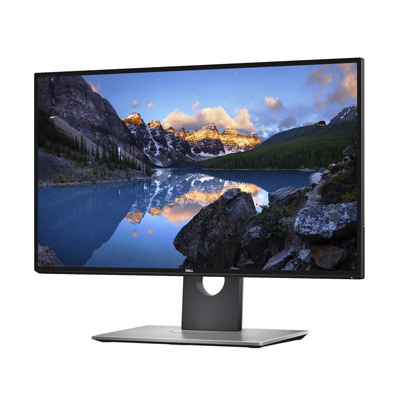 |
| Dell U2518D |
| 4.0/5.0 |
| Size: 25 in |
| Resolution: 2560 x 1440 |
| Great out-of-box color accuracy, wide viewing angles. |
| Check Amazon |
| Best Value |
|---|
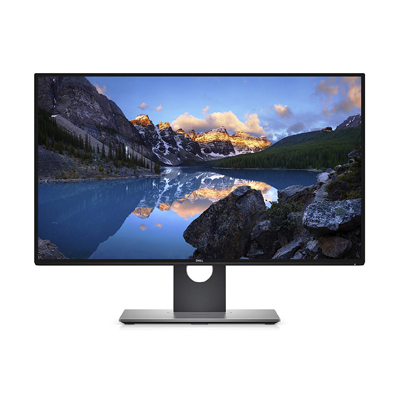 |
| Dell U2718Q |
| 4.2/5.0 |
| Size: 27 in |
| Resolution: 3840 x 2160 |
| Great color accuracy, good viewing angles, good ergonomics. |
| Check Amazon |
| Top Pick |
|---|
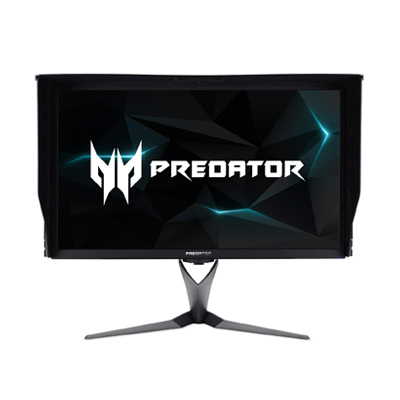 |
| Acer Predator X27 |
| 4.6/5.0 |
| Size: 27 in |
| Resolution: 3840 x 2160 |
| Nvidia G-Sync support, intuitive OSD control scheme. |
| Check Amazon |
Best IPS Monitors Comparison Table
| Name | Rating | Size | Resolution | Refresh Rate | Response Time | Panel Type | Weight | Price |
|---|---|---|---|---|---|---|---|---|
| Acer Predator X27 | 4.6 | 27 in | 3840 x 2160 | 120 Hz | 4 ms | IPS | 27.1 lb | Check Price |
| Dell U2518D | 4.0 | 25 in | 2560 x 1440 | 60 Hz | 5 ms | IPS | 13 lb | Check Price |
| Dell U2718Q | 4.2 | 27 in | 3840 x 2160 | 60 Hz | 5 ms | IPS | 13.8 lb | Check Price |
| Asus ROG Swift PG279Q | 4.3 | 27 in | 2560 x 1440 | 144 Hz | 4 ms | IPS | 15.4 lb | Check Price |
| LG 32UD99-W | 4.3 | 32 in | 3840 x 2160 | 60 Hz | 5 ms | IPS | 18.5 lb | Check Price |
1. Acer Predator X27 (Best Pick)
Editor’s Rating: 4.6/5.0
If you don’t want to compromise on anything, the Acer Predator X27 is the best IPS monitor that you can get today. It’s got pretty much everything, featuring Quantum Dot tech, 4K resolution, a high native refresh rate, G-Sync support, proper HDR implementation, built-in speakers, and a USB hub. You can get it for about $1,800 – a steep price to pay for everything it brings to the table.
The X27 is a well-designed 27-inch IPS monitor with a stable stand, a thin bezel, a set of blinders for glare reduction, and internal speakers. It has a thick frame overall, easily sticking out when mounted on the wall. The stand has a wide base and takes up a large space, so you’ll need an equally large table. If you want to mount it on the 9wall to save space, you’ll need to use the special VESA adapter included in the box.
While not on the same level as the Dell UltraSharp monitors on this list, the X27 offers decent ergonomics. You can tilt and swivel the screen as well as adjust the height, with decent ranges for all three adjustment options. You can’t switch it to portrait mode, though. The stand, which has basic cable management, easily supports the monitor, with no major wobbling issues.
Like many LG monitors, the X27 has an intuitive control scheme for the on-screen display, featuring a small joystick for menu navigation. Along with the three function buttons and the power button, the joystick is located on the bottom-right corner, on the backside. It’s easy to use, though not when the blinders are attached. Acer also did a good job with the OSD itself, with the X27 featuring an organized control panel with a good selection of options.
Concerning connectivity, the X27 is not that different from the best G-Sync monitors. For video input, you can use either the HDMI port or the DisplayPort, both of which are down-facing on the back panel, along with the analog audio out. Additionally, the X27 comes with four USB 3.0 down ports, with one pair outward-facing on the back panel and one pair on the monitor’s left side for quick access; one of the USB ports can be used for fast charging.
The X27 is a versatile display that works well for different applications. You can use it for photo editing, graphics design, media consumption, coding, office work, and gaming, among others. With its 4K resolution, you get sharper texts and more detailed images. Its viewing angles are great, too, which means the picture quality stays good even when the screen is viewed from the side. On the downside, it has a low contrast ratio and poor black uniformity.
Although its color accuracy is not good out of the box, the X27 looks great once properly calibrated, with almost perfect coverage for both sRGB and Adobe RGB color spaces. And unlike other HDR monitors under $1,000, the X27 has good HDR performance, boasting an extremely high brightness in that mode. It has wide color gamut support, with good coverage for both DCI-P3 and Rec. 2020 color spaces.
As a gaming monitor, the X27 is excellent, featuring an exceptional response time, a low input lag, and G-Sync support. With G-Sync, you get buttery smooth gameplay with reduced screen tearing and stuttering. If the already great native refresh rate is still not enough for you, you can easily overclock it to 144 Hz. Whether you mainly play first-person shooters, fighting games, and racing games or prefer action RPGs, sports games, and real-time strategy games, you’ll love this high-end IPS monitor.
Overall, the X27 is an outstanding all-around monitor packing a drool-worthy list of features. Although it’s under the gaming-focused Predator brand, it’s not just a premium monitor for gaming. It also works well for productivity and general use and is a great display for HDR content. If money is not an issue for you, the X27 is the best IPS monitor that you can get today.
If you are not a fan of Acer products or don’t like the X27’s overall look, check out the similarly priced Asus ROG Swift PG27UQ instead. It’s pretty much the same display, with only minor differences in some areas. You can’t go wrong with either product; they are both beastly monitors that work well for all-around use.
| Tech Specs |
|---|
| Size: 27 in |
| Resolution: 3840 x 2160 |
| Refresh Rate: 120 Hz |
| Response Time: 4 ms |
| Panel: IPS |
| Weight: 27.1 lb |
| The Pros |
|---|
| Near-perfect sRGB and Adobe RGB coverage |
| Good HDR performance |
| Wide viewing angles |
| High native refresh rate |
| Nvidia G-Sync support |
| Fast response time |
| Low input lag |
| Intuitive OSD control scheme |
| The Cons |
|---|
| Extremely expensive |
| Low contrast ratio |
| Subpar out-of-box color accuracy |
2. Dell U2518D (Best Budget)
Editor’s Rating: 4.0/5.0
There are several good IPS monitors selling for $300 or less, but out of all of them, the Dell U2518D offers the best overall value. It’s an excellent budget monitor that works well for all-around use, and that includes gaming and photo editing. Its build quality is good while its overall picture quality is great, with exceptional color accuracy.
A 25-inch display, the U2518D looks identical to other units under the Dell UltraSharp roster. It’s got a minimalist design, featuring a thin bezel, a well-built stand, and a clean back panel. It will look good in a wall-mounted setup, thanks to its thin frame. Even with the stand, the U2518D has a smaller footprint than our top pick due to its more basic stand, which has a hole near the bottom for cable management.
In addition, the U2518D has much better ergonomics than the Acer Predator X27, offering full adjustability, including the option to pivot to portrait mode. You can adjust the height as well as tilt and swivel the screen, giving you the freedom to adjust the screen for the most comfortable setup. If you want, you can also mount it to a flexible monitor arm.
You can always count on Dell to do a good job when it comes to the OSD. The U2518D’s OSD is well designed, with an organized structure and a good selection of options. Located on the bottom-right corner, under the frame, the OSD buttons are also good; they are responsive and produce a nice click when pressed.
Compared to our top pick and most other budget monitors, the U2518D has a much longer list of connection options. It comes with a DisplayPort In, a DisplayPort Out, a Mini DisplayPort, an HDMI port, an audio out, and four USB 3.0 down ports. Of the four USB ports, two are on the monitor’s side for quick access, one of which supports fast charging; all the other ports are down-facing at the back.
The U2518D is surprisingly versatile for a budget IPS monitor. It works well for office work, media consumption, and gaming, featuring a much better out-of-box color accuracy than our top pick. It’s also a good monitor for photo editing, thanks to its excellent coverage for the sRGB color space. On the other hand, the U2518D has a mediocre black uniformity and a subpar contrast ratio, both of which are common among IPS monitors.
Overall picture quality is great. The U2518D can produce accurate colors and has good viewing angles, with its high resolution making images more detailed. It has good brightness and reflection handling as well, which makes it a suitable monitor in a bright room. While it has HDR support – a surprising feature for a $300 monitor – the U2518D is nowhere near as good as the Acer Predator X27 on that end, so don’t expect too much regarding HDR performance.
The U2518D is also a solid monitor for gaming. It has a fast response time and a good input lag that will please regular gamers. But for hardcore gaming, it’s not a recommended option due to its limited 60 Hz refresh rate and lack of adaptive sync technology. If you mainly play single-player games, the U2518D is a good monitor. If your gaming diet is mostly made up of multiplayer first-person shooter games, consider other options.
If you want an affordable IPS monitor that offers good long-term value, get the U2518D. It has a QHD resolution, HDR support, exceptional color accuracy, wide viewing angles, good ergonomics, a fast response time, and lots of connection options. It’s a much better investment than most other budget-friendly IPS displays in the same price range.
| Tech Specs |
|---|
| Size: 25 in |
| Resolution: 2560 x 1440 |
| Refresh Rate: 60 Hz |
| Response Time: 5 ms |
| Panel: IPS |
| Weight: 13 lb |
| The Pros |
|---|
| Great out-of-box color accuracy |
| Wide viewing angles |
| HDR support |
| Fast response time |
| Fully adjustable stand |
| Good connectivity options |
| The Cons |
|---|
| Subpar contrast |
| Mediocre black uniformity |
3. Dell U2718Q (Best Value)
Editor’s Rating: 4.2/5.0
The Dell U2718Q is basically the Dell U2518D’s big brother, featuring a larger screen, a higher resolution, and a lower input lag for gaming. It’s one of the best monitors for productivity, especially if you’re going for a dual-monitor setup. You can get it for around $500, though you might be able to get it for much less during a big sale.
In design, the U2718Q is identical to our budget pick as well as all the other models in the Dell UltraSharp series. It’s got a professional look, with a very thin bezel, a clean back panel, and a sturdy stand with a small hole for cable management. Like with our budget pick, there are no speakers on this unit, which might disappoint those expecting at least basic audio from a $500 product.
The well-built stand has a flat base, easily supports the screen, and offers good ergonomics. You can adjust the height, tilt forward/backward, swivel left/right, and pivot to portrait mode. The U2718Q is a versatile unit that works well in different screen setups. You can mount it on the wall, attach it to a monitor arm, or go for a dual-monitor setup.
As with our budget pick, Dell did a good job with the OSD, equipping the U2718Q with an organized control panel with a good number of options. It’s easy to go through, with none of those confusing sub-menus found in some monitors. The buttons, which are located on the bottom-right corner, are easy to use as well, though some might prefer a joystick-based control scheme.
In regard to connection options, the U2718Q is almost identical to our budget pick: it comes with the same set of ports except for the DisplayPort Out. At the back, you’ll find an HDMI port, a DisplayPort, a Mini DisplayPort, an audio port, and four USB 3.0 down ports, two of which offer fast charging support even when the monitor is on standby. Of those four USB ports, two are on the monitor’s left side for quick access.
The U2718Q is an even better monitor for all-around use than the U2518D. Its 27-inch screen and 4K native resolution make it great for multitasking with multiple windows. It’s got excellent coverage for the sRGB color space, with decent color accuracy out of the box. It has HDR support as well, but as with our budget pick, its HDR performance is decent at best. And as with other displays with an IPS panel, the U2718Q has a low contrast ratio.
Although it’s not as smooth and responsive as monitors with a very high refresh rate and adaptive sync tech, the U2718Q is also good for gaming. It has a fast response time and a low input lag even when running in its native resolution. It’s a good monitor for PC and console gaming, especially if you mostly play games with gorgeous visuals, such as Far Cry 5, The Witcher 3: Wild Hunt, and Final Fantasy XV.
All in all, the U2718Q is an excellent monitor for all-around use. You can use it for graphics design, web development, photo editing, general office work, watching movies, and gaming. It’s a well-built unit, featuring great overall picture quality, good viewing angles, a fully adjustable stand, lots of connection options, and a low input lag. If you don’t want to spend well over $500 for the best IPS monitors, the U2718Q is a great option.
| Tech Specs |
|---|
| Size: 27 in |
| Resolution: 3840 x 2160 |
| Refresh Rate: 60 Hz |
| Response Time: 5 ms |
| Panel: IPS |
| Weight: 13.8 lb |
| The Pros |
|---|
| Great color accuracy |
| Good viewing angles |
| HDR support |
| Low input lag |
| Good ergonomics |
| Lots of connection ports |
| The Cons |
|---|
| Low native contrast ratio |
| Backlight bleed |
4. Asus ROG Swift PG279Q
Editor’s Rating: 4.3/5.0
It’s pretty obvious the Asus ROG Swift PG279Q is marketed specifically for gaming use. But if you look past all the gaming-related specs and features, you’ll see a versatile monitor that’s also great for various non-gaming tasks, including web development, media consumption, and general office work.
One of the best G-Sync monitors currently out, the PG279Q is a 27-inch G-Sync gaming monitor with a high refresh rate and a 1440p resolution. While it normally sells for about $800-900, you can get it for around $700 during a sale, which makes it even more attractive. If that’s still too steep for you, consider getting it as used or refurbished.
Compared to other displays under the Republic of Gamers brand, the PG279Q has a subtler design. If not for the lighting system on the stand, it could pass off as a regular, non-gaming monitor. It has a thin bezel, with the Asus logo on the bottom bezel and button markers etched on the right. It comes with a rigid stand; the ring and ROG logo on the stand’s base light up.
The PG279Q has good ergonomics. You can adjust the height and tilt and swivel the screen, as well as rotate it to portrait mode; the swivel range is one of the better ones out there, with a 60-degree range in both directions. You can easily adjust the screen to whatever position that best suits you, with no need to put a lot of force. If you want to save desk space, you can mount the PG279Q to the wall, but keep in mind that it has a thick frame, so it will stick out more than usual when in a wall-mounted setup.
Like our top pick from Acer, this Asus display features a joystick-based control scheme for going through the on-screen menu. The joystick is located on the bottom-right corner, at the back of the screen, along with the three function buttons and the power button. It’s easy to use and makes going through the menu faster. The OSD is also good, featuring an organized design with a good selection of calibration and gaming options.
Concerning connectivity, the PG279Q is the same as other G-Sync monitors, with only one HDMI port and one DisplayPort for video input. As for other ports, this monitor also comes with one analog audio out for external speakers and a couple of USB 3.0 down ports. Unlike with the previous three products on this list, there are no quick-access USB ports on the monitor’s side – all ports are down-facing on the back panel.
The PG279Q is an outstanding all-around monitor with a high native resolution, great color accuracy, and wide viewing angles. It has a very high standard refresh rate of 144 Hz, which can be easily overclocked to 165 Hz if needed. You can use it for hardcore gaming, productivity, and general use, with its good brightness and reflection handling making it suitable in a bright room.
With the PG279Q, you get a monitor with excellent response time and input lag. And with its G-Sync feature, the picture stays smooth when the frame rate is fluctuating, with Nvidia’s adaptive sync tech – which is more consistent than AMD’s FreeSync – cutting down screen tearing and stuttering. If you love to play fast-paced first-person shooters and racing games, you’ll love this gaming monitor.
However, if you care a lot about contrast, you might be disappointed by this monitor. While it has a fairly decent contrast ratio for an IPS monitor, the PG279Q is still subpar overall on that front, especially when compared to a VA display. Moreover, it’s not ideal for viewing dark content while in a dark room due to its mediocre black uniformity.
In addition to all of that, the PG279Q also comes with weak-sounding speakers, which might disappoint those expecting at least decent speakers from such an expensive product. For gaming and watching movies, it’s far better to use good external speakers or headphones.
Overall, this premium Asus monitor is a great product, not only for serious gaming but also for things such as watching movies, office work, coding, photo editing, and internet surfing, with its 1440p screen making for sharper texts and more detailed images.
If you like what the PG279Q brings to the table but can’t afford it, check out the Acer Predator XB271HU and the AOC Agon AG271QG. They both sell for around $100-200 less, but while they offer the same specs and similar performance, they are inferior to the PG279Q in some areas.
| Tech Specs |
|---|
| Size: 27 in |
| Resolution: 2560 x 1440 |
| Refresh Rate: 144 Hz |
| Response Time: 4 ms |
| Panel: IPS |
| Weight: 15.4 lb |
| The Pros |
|---|
| Great out-of-box color accuracy |
| Good viewing angles |
| Fully adjustable stand |
| Intuitive joystick control |
| Nvidia G-Sync support |
| Excellent response time and input lag |
| The Cons |
|---|
| Subpar contrast ratio |
| Poor black uniformity |
5. LG 32UD99-W
Editor’s Rating: 4.3/5.0
If you want a versatile 4K monitor with a large screen, look no further than the LG 32UD99-W. It’s a 32-inch IPS monitor that’s great for productivity, general use, and gaming, with its large screen making it ideal for multitasking. You can get it for around $800, which puts in in the same price range as the Asus ROG Swift PG279Q.
Like the two Dell products listed in this guide, the 32UD99-W has a minimalist design, featuring very thin bezels on all sides and a clean, all-white back panel. It’s got a well-built stand with a curved base and a small hole for basic cable management. The stand, however, has limited adjustability, with no swivel option and a limited tilt range.
The 32UD99-W comes with built-in speakers, which are acceptable enough for watching video clips on the internet and listening to low-volume music while working. But for watching movies and gaming, it’s a good idea to use external speakers or headphones instead.
At the bottom of the display, you’ll find a small joystick for navigating the OSD, just like with many other LG monitors. The joystick is responsive and makes going through the control panel much faster than when using buttons, though some might find it awkward to use at first. The 32UD99-W also comes with an organized OSD with a good selection of options, but don’t expect to see a lot of gaming-specific features.
When it comes to connectivity, the 32UD99-W is just as good as our two top picks from Dell, although it has a slightly different set of ports. On the back panel, you’ll find a couple of HDMI ports, a DisplayPort, an audio port, a USB-C port, and a pair of USB 3.0 down ports with fast charging support. All ports are outward-facing and are easy to see whether the monitor is parked on a desk or mounted on the wall.
The 32UD99-W is an all-around monitor that works well for different tasks, featuring great picture quality, wide viewing angles, good out-of-box color accuracy, and almost perfect coverage for the sRGB color space. It has a good brightness rating and looks good in a well-lit room, which makes it a suitable monitor for office use. It’s a great monitor for multitasking in split-screen, thanks to its high resolution and large screen.
Of the products included on this list, the 32UD99-W has the best black uniformity. In addition, it’s got a decent contrast ratio for an IPS monitor, although it’s still subpar overall on that end and is inferior to VA displays. While it features HDR support, it’s probably decent at best in that department, too, much like the Dell U2718Q.
For gaming, the 32UD99-W is a great option, but don’t expect it to be as responsive as monitors built specifically for gaming. It has a fast response time, a very low input lag, and FreeSync support for smoother gameplay. You can use it for PC and console gaming, with its FreeSync over HDMI support making it a good 4K monitor for Xbox One X owners. Hardcore PC gamers, however, will be disappointed by its 60 Hz refresh rate.
Wrapping up, the 32UD99-W is without a doubt one of the best IPS monitors currently out on the market. It’s great for all-around usage, featuring excellent color accuracy, good viewing angles, a fast response time, FreeSync support, and good connectivity options.
If you want a more affordable option that offers similar performance, check out the 32UD99-W’s little brother, the LG 27UK650-W, instead. Selling for around $400-500, the 27UK650-W is basically the same display, offering similar performance, but it has a smaller screen and fewer connection options.
| Tech Specs |
|---|
| Size: 32 in |
| Resolution: 3840 x 2160 |
| Refresh Rate: 60 Hz |
| Response Time: 5 ms |
| Panel: IPS |
| Weight: 18.5 lb |
| The Pros |
|---|
| Outstanding color accuracy |
| HDR support |
| AMD FreeSync support |
| Fast response time |
| Low input lag |
| Good connectivity options |
| The Cons |
|---|
| Limited stand adjustability |
| Subpar contrast ratio |
Contents

